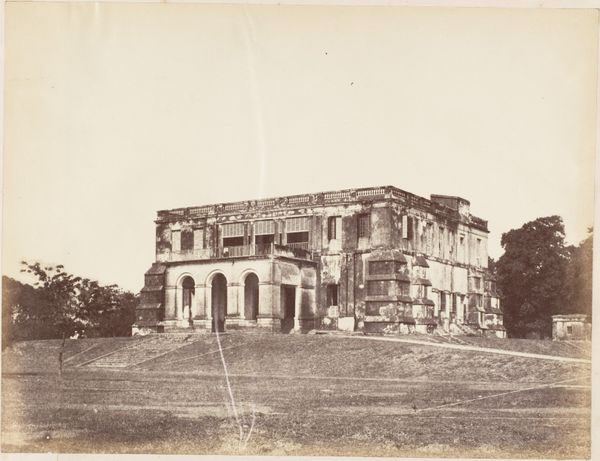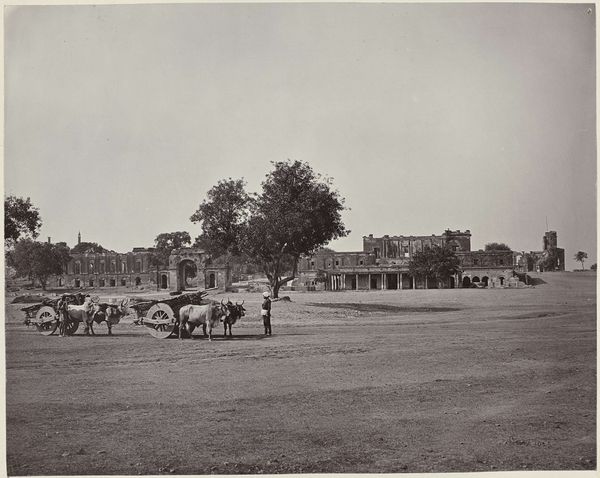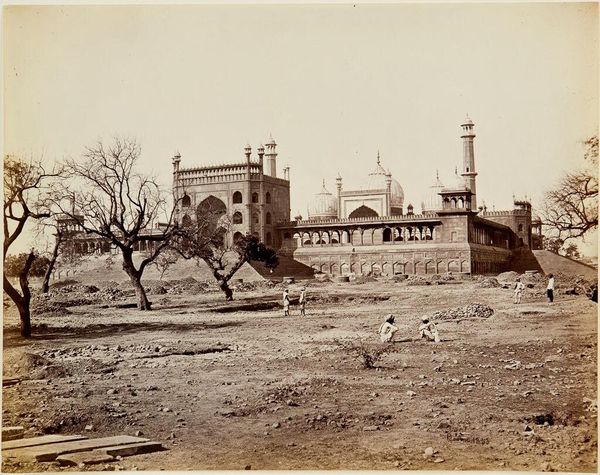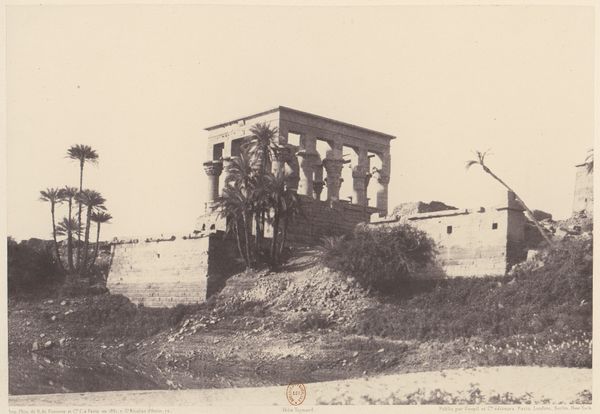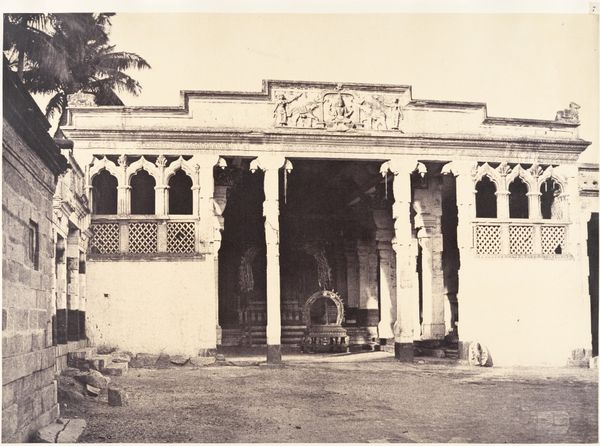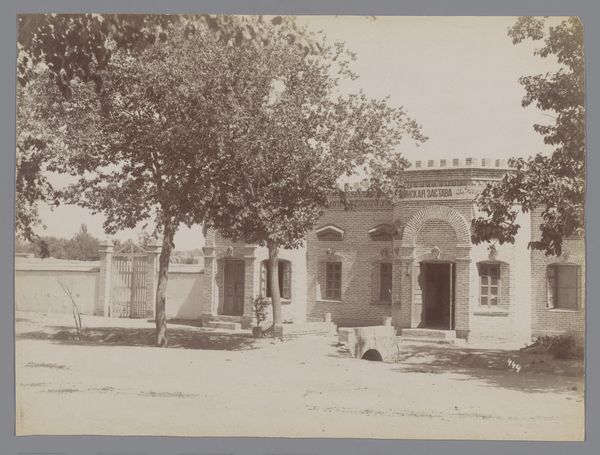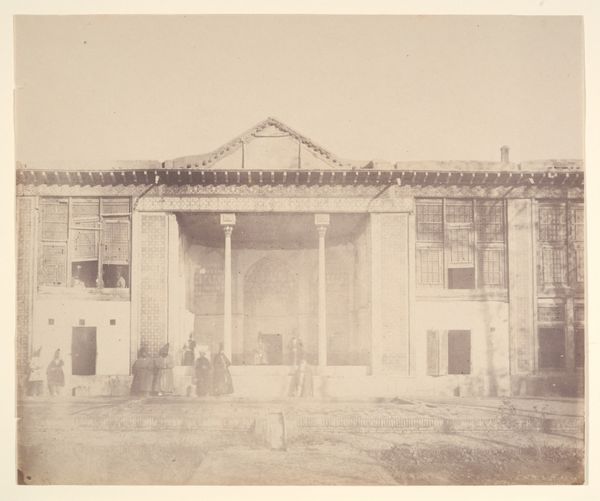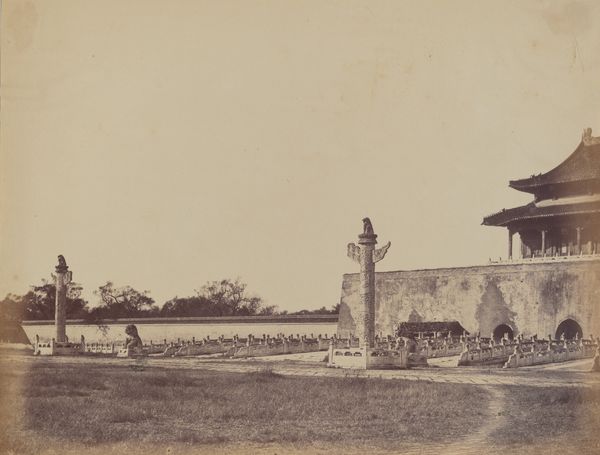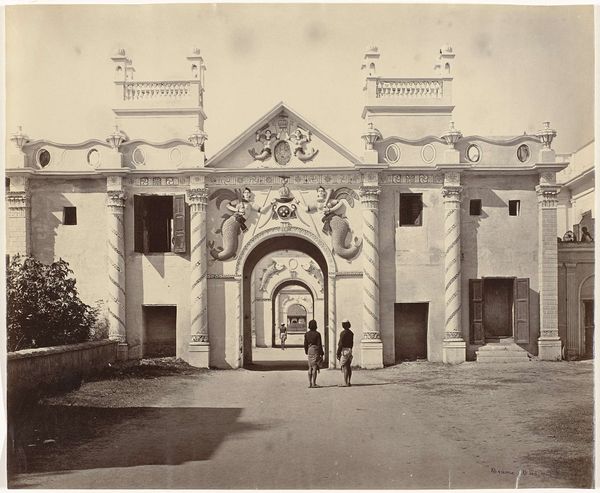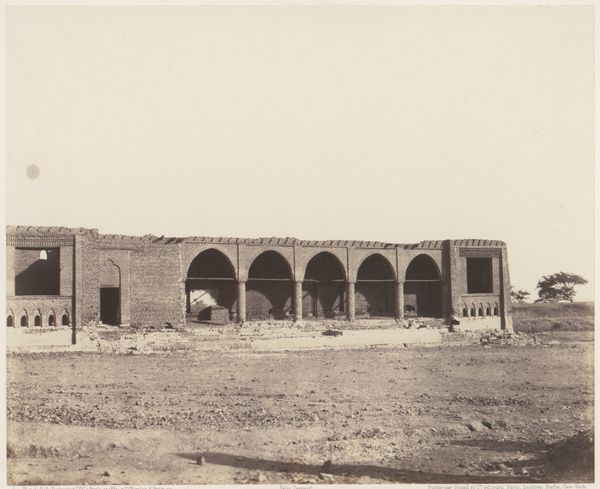
photography, albumen-print, architecture
#
portrait
#
landscape
#
photography
#
albumen-print
#
architecture
#
realism
Dimensions: Image: 17.5 x 25 cm (6 7/8 x 9 13/16 in.) Mount: 21 x 28.2 cm (8 1/4 x 11 1/8 in.)
Copyright: Public Domain
Editor: Here we have Captain R. B. Hill's photograph "Gooldar House" from the 1850s, an albumen print. The print has a soft, almost dreamlike quality and the composition, while straightforward, feels carefully considered. What strikes you when you look at it? Curator: I'm immediately drawn to the material process itself. Albumen printing in the 1850s was intensely laborious. Imagine coating paper with egg whites, sensitizing it with silver nitrate, and then the careful exposure, all under the harsh Indian sun. It’s a stark contrast – the refined image of colonial life against the gritty reality of its production, possibly exploiting local labor. Editor: So you’re thinking about the hidden labour involved in creating this image? Curator: Absolutely. Consider the architecture, too. It projects a certain image of wealth and power, but how was that house constructed? What materials were used, and by whom? The photograph elides those crucial questions. The pristine image hides the complicated social realities that made it possible. It’s not just a pretty picture of a house; it's a record, albeit a selective one, of colonial power and material culture. Editor: That's a perspective I hadn’t considered. I was focusing on the aesthetic. So you see the value in analyzing art through the lens of its production? Curator: Precisely. The photograph becomes evidence, prompting us to investigate the relationships between the art object, the labor behind it, and the wider social context of its creation. Think about the albumen print – it was relatively cheap to produce – allowing wider audiences access. The photographic print as commodity changed consumption practices. Editor: That shifts the way I understand it entirely. Thanks to focusing on the materials and process, you've highlighted aspects I hadn't even thought about. Curator: And, perhaps, gives us a richer understanding of our relationship to the photograph.
Comments
No comments
Be the first to comment and join the conversation on the ultimate creative platform.

